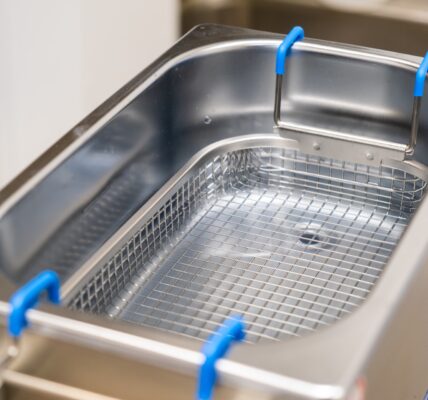The Challenges and Complexities of Semiconductor Manufacturing Semiconductor manufacturing is one of the most intricate and challenging engineering feats in the modern world. It involves a series of highly precise and controlled processes to transform raw materials into tiny, powerful devices that are the foundation of contemporary electronics. The complexity of this manufacturing process stems from several key factors, including the precision required, the scale of production, and the rapid pace of technological advancement. This article delves into the difficulties inherent in semiconductor manufacturing, highlighting the various challenges that make it one of the most demanding industries.
Precision and Scale Precision:
Sub-Micron Features: Semiconductor devices feature components that are often smaller than a micrometre. As technology progresses, these features are shrinking to the nanometer scale, requiring extreme precision in each manufacturing step. Tight Tolerances: The manufacturing process must adhere to exceptionally tight tolerances. Even minute deviations can render a semiconductor device non-functional or significantly reduce its performance. Scale:
Mass Production: Semiconductor manufacturing must produce millions of identical, high-quality devices. This requires maintaining consistent quality across large volumes, which is a significant challenge. Complex Supply Chain: The production involves a vast, global supply chain, including raw material suppliers, equipment manufacturers, and various service providers. Coordinating this supply chain efficiently is crucial to avoid delays and ensure quality.
Advanced Equipment and Technology Photolithography:
High-Resolution Imaging: Photolithography, the process of transferring circuit patterns onto a silicon wafer, requires high-resolution imaging techniques. The development and deployment of Extreme Ultraviolet (EUV) lithography are critical for producing smaller nodes but involve complex and costly machinery. Alignment and Calibration: Ensuring precise alignment and calibration of photolithography equipment is vital. This requires sophisticated technologies and frequent adjustments to maintain accuracy. Etching and Deposition:
Atomic-Level Control: Modern semiconductor devices require atomic-level control in etching and deposition processes. Techniques like atomic layer deposition (ALD) and atomic layer etching (ALE) are essential but challenging to implement due to their precision requirements. Material Innovation: Continuous innovation in materials science is necessary to develop new materials that meet the performance and reliability requirements of advanced semiconductor devices.
Environmental Control Cleanroom Standards:
Contamination Prevention: Semiconductor fabrication occurs in cleanrooms with stringent contamination control standards. Even a single particle or impurity can cause defects, making it crucial to maintain ultra-clean environments. Stringent Protocols: Cleanroom protocols include rigorous gowning procedures, controlled airflow systems, and regular monitoring to prevent contamination. Temperature and Humidity Control:
Thermal Stability: Maintaining precise temperature and humidity levels is essential to prevent thermal expansion and contraction, which can affect the precision of the manufacturing processes. Environmental Monitoring: Continuous monitoring and control systems are required to ensure environmental stability within the manufacturing facilities.
Yield and Quality Control Yield Management:
Defect Reduction: Achieving high yields involves reducing the number of defects during the manufacturing process. This requires detailed process control and continuous monitoring to identify and eliminate sources of defects. Statistical Process Control (SPC): Implementing SPC techniques helps monitor and control process variability, ensuring consistent quality and improving yield. Inspection and Testing:
Inline Inspection: Advanced inspection equipment is used at multiple stages to detect defects early and prevent faulty devices from progressing through the production line. Rigorous Testing: Electrical and functional testing of semiconductor devices is performed to ensure they meet performance specifications. This includes parametric testing, burn-in testing, and final test procedures.
Rapid Technological Advancement Moore’s Law
Shrinking Nodes: Following Moore’s Law, the industry strives to double the number of transistors on a chip approximately every two years. This requires constant innovation in manufacturing processes and technologies. Research and Development: Significant investment in research and development is necessary to overcome the technical challenges of miniaturization and to develop new fabrication techniques. Innovation Cycles:
Short Product Lifecycles: The rapid pace of technological advancement leads to shorter product lifecycles, requiring manufacturers to quickly adapt to new technologies and processes. Continuous Learning: Engineers and technicians must continuously update their skills and knowledge to keep up with the latest advancements in semiconductor manufacturing technologies.
Cost and Investment High Capital Expenditure:
Expensive Equipment: The cost of advanced semiconductor manufacturing equipment, such as EUV lithography machines, can be exorbitant, often exceeding hundreds of millions of dollars. Facility Costs: Building and maintaining state-of-the-art cleanroom facilities is also a significant financial investment. Operational Costs:
Energy Consumption: Semiconductor manufacturing processes are energy-intensive, leading to high operational costs. Maintenance and Upkeep: Regular maintenance and calibration of equipment are essential to ensure optimal performance and yield, adding to the overall cost of manufacturing. Conclusion Semiconductor manufacturing is a highly challenging and complex process that requires extreme precision, advanced technology, and substantial investment. The difficulties stem from the need to produce devices at atomic scales, maintain ultra-clean environments, manage yield and quality control, and continuously innovate to keep pace with technological advancements. Despite these challenges, the industry’s relentless pursuit of innovation and excellence drives the development of ever more powerful and efficient semiconductor devices, fueling progress in electronics and beyond.
Hey there! I’m a self-proclaimed Twitter addict and an unapologetic coffee lover.









